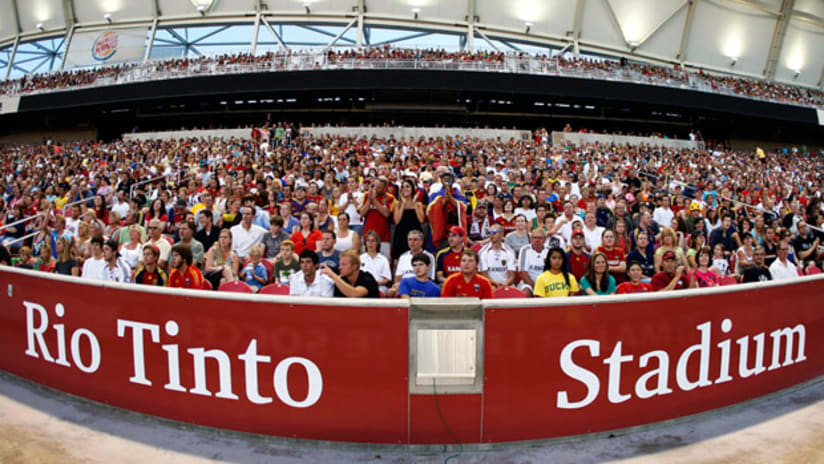Whose home-field advantage is greater? That's just one of the more interesting angles in the upcoming CONCACAF Champions League semifinal series between Saprissa and Real Salt Lake.
The hostile environment at Estadio Ricardo Saprissa Aymá, home of Deportivo Saprissa, is legendary. So much so that immediately after the fate of this pairing was determined last week, retired MLS midfielder Kyle Martino tweeted that it was the toughest place that he’d ever played. In kind, RSL 'keeper Nick Rimando tweeted, “Saprissa it is ... Last time I played there I got coins thrown at me.”
The stadium in the Costa Rican capital of San José, dubbed La Cueva del Monstruo ("The Monster's Cave"), has proven to be a difficult place to play for MLS teams, as well as the US national team. The Americans have never won their in seven tries. While Columbus did escape with a 1-0 victory in the 2009-10 CCL group stage, that was the exception rather than the rule.
[inline_node:329831]So what makes Saprissa Stadium such a difficult place to play?
“I’ve been down in Costa Rica twice in national-team games in that same stadium,” said RSL head coach Jason Kreis. “The crowd is very close to the field. Back in those days, the locker rooms in some of those areas was like third-world stuff.
"Having the crowd that’s right on top of you, and jumping up and down and you keep looking up at the ceiling thinking, 'When is that going to fall in on us?' Having rocks thrown at buses and bags of urine thrown out on the field. Those sorts of things since I think have been cleaned up a little bit.”
In addition, the stadium switched from grass to FieldTurf back in 2004 because of the propensity for heavy amounts of rainfall in the area. While turf can cause problems for visitors not accustomed to the unusual bounces, many of the RSL players are familiar with that surface, having played on the rug at Rice-Eccles stadium until late in the 2008 season.
The humidity can also be a concern. However, the match played in early April will before the start of the rainy season.
Despite all of this, Saprissa don’t appear to be as overpowering at home lately, as they have already lost twice this year in league play. But perhaps this important Champions League matchup will raise the level of vitriol among the Saprissa faithful.
On the other hand, Rio Tinto Stadium has some advantages to offer its home team as well. In mid-March, the weather could play into the hands of RSL, as their opponent will not be used to playing in the cold weather conditions of a Rocky Mountain winter.
The altitude will not necessarily be a significant factor as San José sits in the mountains at an elevation of approximately 3,800 feet, while Salt Lake is 4,200 feet above sea level.
But there is the extended series of success at home for Real Salt Lake. They haven’t lost within the confines of their own fortress, Rio Tinto, in 34 matches – a period dating back to May of 2009. Much of the secret to that success is owed to the fans, according to Kreis.
“I’ve made no bones about my feelings that our crowd has spurred us on to a lot of really, really good results here, and have played a big, big role in our record at home,” he said.
By nature of the draw, the first leg will be played in Sandy on March 15, despite the fact that RSL won their group, while Saprissa finished second in theirs. The return leg takes place on April 5 in San José.
Think you know the game? Test your powers of prediction with MLSsoccer.com's fantasy game,Pro Soccer Picks. Play NOW!


